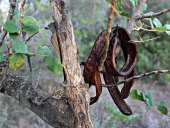








 1
1








The cultivation and expansion of needs is the antithesis of wisdom - E.F. Schumacher, Small is Beautiful
 2
2




 1
1












Clay Rogers wrote:I guess I was thinking that this would be good biomass to add to the orchard/garden. I realize that you don't want to take all of this out of the area as it would eventually deplete that area of the nutrients. But, I figured there was still plenty and if anything I would want extra nutrients going to the places I was growing food.
Idle dreamer





|
So there I was, trapped in the jungle. And at the last minute, I was saved by this tiny ad:
Switching from electric heat to a rocket mass heater reduces your carbon footprint as much as parking 7 cars
http://woodheat.net
|



